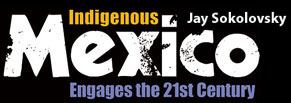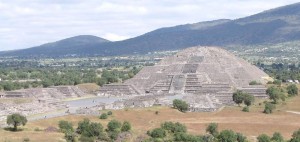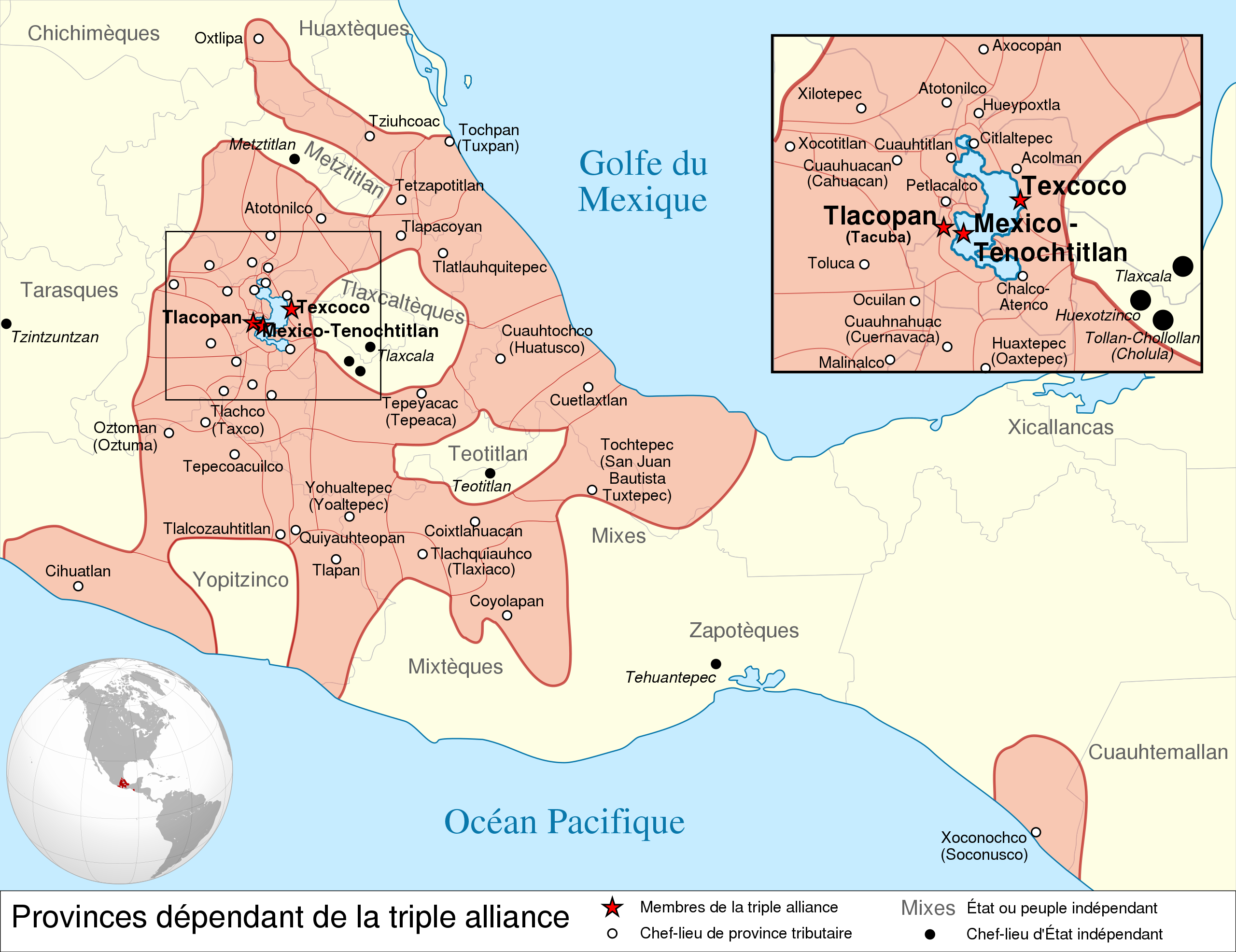Chapter 1. Never say “chou-chou ley” to an Aztec!
Introduces students to the dilemmas of fieldwork and brings the reader from my early contact with the village and what one experiences coming into the village in 2010.
Video: Learning Nahuatl
One of my language teachers was the elder grandmother in Buena Vista named Concha. In this short video from 2010, Concha gives me a refresher in some basic Nahuatl words.
Video: “El Baby Shower”
In 2010, the family was pleased with the timing of our visit since it would be just before the birth of Gordo’s child. They hoped that my wife could participate in her role as comadre in a new ritual just catching on there, called, “El Baby Shower”.
Video: Mexica Room
In Mexico’s National Museum of Anthropology (Spanish narration) – One day was spent in a very productive visit to the magnificent National Museum of Anthropology discussing with a curator the newest exhibit and research on Nahuatl culture.
PowerPoint: Tepotzlan
In June of 2010, I experienced Tepotzlan as a highly regulated tourist town with boutique spa-hotels, Chinese and Indian restaurants and jewelry-gift stores catering to international tourists.
Video: Trip to Texcoco
PowerPoint: – Some places mentioned in Chapter 1
Web Link: Where is San Jerónimo Amanalco?
The map below, sets the Municipio of Texcoco in the State of Mexico and locates the community of San Jerónimo Amanalco in the eastern mountains of the municipal unit of Texcoco. Google Map and Street View of Amanalco Click here to see Amanalco on Google Earth and also with a 2011 “street view” scroll through the residential areas of Amanalco. At this site place the figure of a person, with a green base, along the blue lines and you will see a view of the streets.
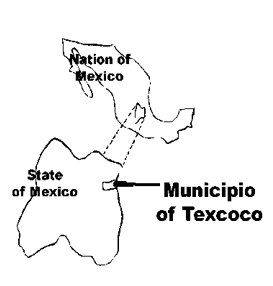
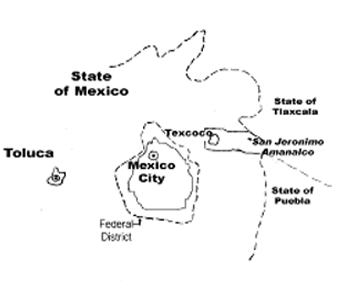
The maps above, set the Municipio of Texcoco in the State of Mexico and locate the community of San Jerónimo Amanalco in the eastern mountains of the municipal unit of Texcoco.
Web Link: Teotihuacan
Lying at 7200 feet above sea level, this is the flat eastern portion of the valley of Mexico, a region crucial to the history of Mexico and all of the Americas. In this region is found the famous pyramids of Teotihuacan. From the 3rd until the late 8th century AD, the New World’s first megalopolis developed at this site, eventually spreading out over eight square miles and housing a quarter of a million urbanites.
Web Link: Aztec Empire 1519 Map and Aztecs of Central Mexico: An Imperial Society
The Mexica are known to the modern public for their use of human sacrifice in public rituals and their starkly powerful art which has been displayed in major museums around the world. Lesser known was the sophistication of their agricultural, engineering and scientific knowledge which produced a complex system of food production and trade sustaining an urban-linked empire spreading throughout central Mexico from the Pacific to the Gulf coasts and beyond.
Web Link: Anahuac, by Edward Tyler
Central Mexico has been the source of much anthropological research and imagination from the discipline’s inception. Edward Tyler, credited with the first Anthropology textbook published in 1881, earlier in 1855 wrote Anahuac, a travelogue which included culturally detailed descriptions of Texcoco and some of the surrounding communities and peoples. It provides an idea of the human face of Central American colonialism in the middle of the 19th century [- Read Anahuac on line].

Video: Tetzcotzingo, Mystical Mountain
The road from Texcoco toward Puebla gradually slices higher through foothills of a piedmont area and past signs for mestizo villages such as Tlaixpan, Purificacion and Tlaminca. In this region is also found the archaeologically and symbolically important mountain called Tetzcotzingo . Here in the 15th century, King Nezahualcóyotl created temples, waterworks and a ritual setting within one of the world’s first botanical gardens which sought to preserve flora and fauna from the breadth of the Aztec empire (Avilés 2006).
PowerPoint: The Fading Archaeological Heritage of Amanalco
On the left side of this road the area almost replicates what can be seen in my photos from 1972, a highly eroded, dusty beige landscape dotted occasionally with scrub bushes, prickly pear cactus and electric power towers marching up the mountain.
Student Question:
After viewing the following Power Point, including the short video link on slide number 3, think about the following: From the perspective of Amanalco’s residents, what might be the arguments for or against preservation of these lands as a heritage site versus their use for agriculture?
Video: Exploring the Changing nature of Indigenous Identity
Importantly, those pushing hardest to retain an indigenous identity are often residents with the most education, including a collective of college students and graduates who in 2008 formed a group called “Ollin Amanalco Pilhuame” (sons of Amanalco Moving Ahead). In this video a leader of the Ollin group discusses the contemporary dilemma of being considered indigenous.
PowerPoint: View the Village 40 years ago
Driving through the community’s central artery in 2010 it is hard to believe this is the same indigenous village I had first lived in four decades years earlier.
Video: Drive from Texcoco to Amanalco, 2010
Video: Bandas “Vientos Del Cerro”
In 2010, Amanalco seemed like “garage band” central and youth under 20 sounded almost as familiar with current songs as many of my students back in Florida. An example of one of these new bands is Vientos del Cerro (Mountain Winds) and I was able to video a practice session in a converted store front in the middle of Amanalco.
Interact with Bandas “Vientos Del Cerro”
You can interact with and follow the exploits of the group by either their Facebook page or subscribing to their channel on YouTube.
Added Value: A community of music and a favorite of Yanni!
Incredibly, in 2009 the world famous performer Yanni had somehow heard about Amanalco, came to visit one of its bilingual schools and was so taken with the musicality of the Nahuatl language that he flew a group of community children to Acapulco for a new age music video starring these kids singing in their indigenous language!
